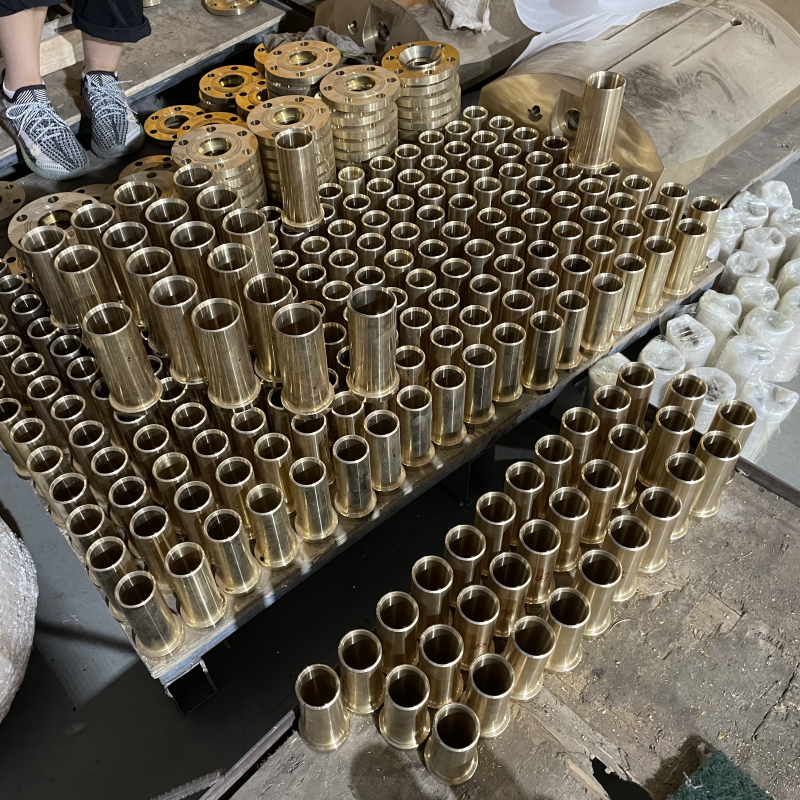 Mazhuang Village, Yuhe Town, Huixian City, Xinxiang City, Henan Province, China
Mazhuang Village, Yuhe Town, Huixian City, Xinxiang City, Henan Province, China
 Service Hotline +86 17630258963
Service Hotline +86 17630258963  Cell phone +86 17630258963
Cell phone +86 17630258963 The national standard of surface hardness of bronze bushings will vary depending on the type of copper alloy, the following are some common copper alloys copper bushings hardness standard reference value:
Hardness ≥ 885HB (reference value). This tin bronze bronze bushings high hardness, excellent wear resistance, not easy to produce bite phenomenon, have good casting performance and cutting performance, good corrosion resistance in the atmosphere and fresh water, commonly used in high load and high sliding speed under the work of wear-resistant parts, such as connecting rods, bushings, axle shingles, gears, worm wheels and so on.
Hardness ≥ 590HB (reference value). The lead bronze in the lack of lubricants and with water lubricant conditions, sliding and self-lubricating properties, easy to cut, but poor casting performance, good corrosion resistance to dilute sulfuric acid.

As an aluminum bronze containing iron and manganese elements, its hardness and other mechanical properties are suitable for the manufacture of high-strength wear-resistant parts and parts working under certain temperature conditions, the specific hardness standards in the relevant standard documents, although not explicitly mentioned in the typical hardness range value, but this material is commonly used in the manufacture of bushings, bushings, gears, spherical seat, nuts, flanges, and other parts of the hardness of the higher requirements.
Its hardness HV is 75 ~ 125HV (room temperature tensile mechanical properties of the strip, sample size thickness ≥ 0.3mm). H70 brass has good plasticity and high strength, good cutting and machining performance, easy to weld, and more stable to general corrosion.
It should be noted that the above is only some common copper alloy copper bushing hardness standard reference information, the actual application may also vary according to the specific requirements of the working conditions, manufacturers of technical requirements and other factors. In the selection and use of copper bushings, should be based on specific needs and standards for assessment and judgment.
